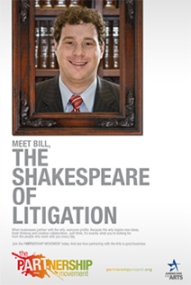
Michael Granberry
Bold Partnership for Dallas Arts Orgs (from The pARTnership Movement)
Posted by Nov 29, 2012

Michael Granberry
 Dallas-based AT&T is putting its business acumen to work for five financially challenged arts organizations. The corporation will provide free oversight to the Dallas Symphony Orchestra, Dallas Opera, AT&T Performing Arts Center, Dallas Theater Center, and Dallas Summer Musicals.
Dallas-based AT&T is putting its business acumen to work for five financially challenged arts organizations. The corporation will provide free oversight to the Dallas Symphony Orchestra, Dallas Opera, AT&T Performing Arts Center, Dallas Theater Center, and Dallas Summer Musicals.
The goal of the partnership is to stanch the financial bleeding that has plagued the organizations since the 2008 recession.
“The old economic business models are not working,” DSO chairman Blaine Nelson said. “Revenues are falling far short of costs and expenses.”
Financial woes have besieged the DSO, Dallas Opera, and Dallas Summer Musicals, which recently asked the city for money.
The partnership is designed to help the companies streamline operations and share numerous endeavors, while preserving their independence. It’s also aimed at quelling the fierce competition that has existed at times between the performing arts center and Dallas Summer Musicals, both of which present Broadway shows.
Nelson says that “donor heroics” are no longer a winning strategy. Donors are, he said, increasingly younger givers who have tired of “a bottomless pit” and the absence of a “sustainable business model.” They prefer to be seen, he said, as investors, not donors.
Nelson helped conceive the new model, called the Performing Arts Collaboration, which was first broached six months ago.
Read More













